How difficult is Everest Base Camp Trek?
You don’t have to be a hero to accomplish great things—to compete. You can just be an ordinary chap, sufficiently motivated to reach challenging goals. - Sir Edmund Hillary
You don’t have to be a hero to accomplish great things—to compete. You can just be an ordinary chap, sufficiently motivated to reach challenging goals. - Sir Edmund Hillary

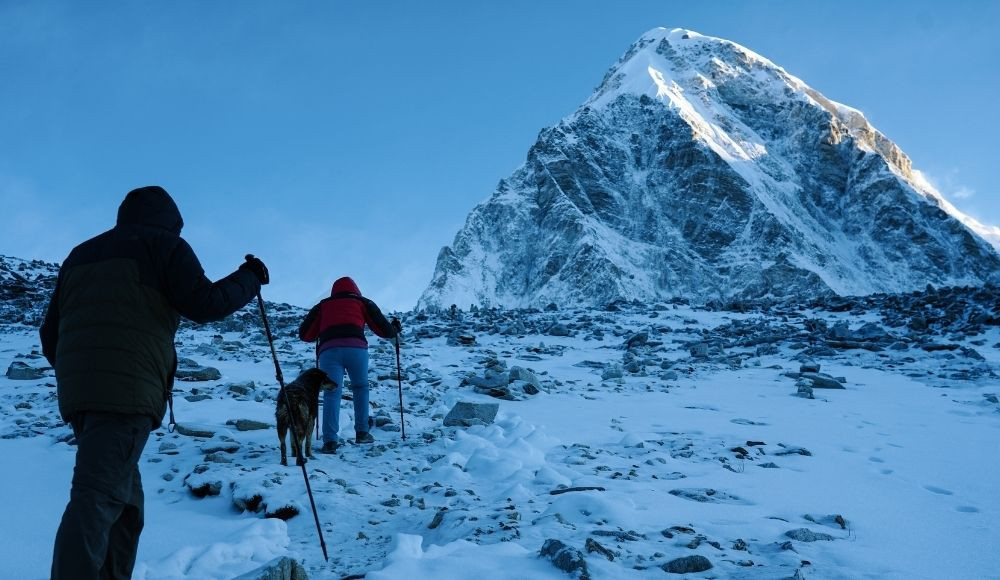
One question that revolves in the mind of every novice to experienced trekkers about the trekking in Khumbu is how difficult is Everest base camp trek exactly? Well, there's not any precise answer to that. But trekking comes with a strong motivation and desire to explore mountains. So, with a lot of enthusiasm and a little physical fitness, trekking to Everest is possible. Everest Base Camp trek is a world-renowned odyssey to the top of the world. Admired and ventured by many, and boasted for its amazing high altitude adventure, the Everest region is one of its kind and a massif that honours the tragedies and celebrates the inspiration in the adventure sphere.
Trekking to the Everest Base Camp is a popular activity in the Khumbu region of Nepal. This trekking was popular ever since its discovery for its amazing natural settlements, and high elevation attributes. In light of the trekking area, the Khumbu region in eastern Nepal is known for some of the incredible mountain panoramas such as Mount Everest, Ama Dablam, Cho Oyu, Khumbu Yui Lha, Imja Tse, Taboche, Gokyo Ri, Kangtega, Kala Patthar, Pumori, Numri, Cholatse, Lobuche, Ombigaichan, Thamserku and many other neighbouring peaks and mountains. Climbing to the summit of these incredible mountains is an adventure that tests you to the extreme, but the Everest Base Camp trek is an experience to explore to witness the mindblowing Himalayan panorama including some eight-thousanders.
Everest base camp trek is indeed an adventure of a lifetime. The spectacular Himalayas, Sherpa villages and their lifestyle and the astounding atmosphere are the major attractions of the trek. The trek is not so difficult as the trails are curated and well maintained. However, frequent elevation gain in the higher elevation can make it arduous for some people. But the chances of extreme difficulty due to elevation gain is low as the itineraries of the Everest Base Camp trek are tailored including acclimatization stays and stopovers on appropriate and suitable places.
Trekking to the Everest base camp is a great way to experience the mighty Himalayas from up close. It's a popular trek that takes you through the Himalayan hills and valleys, past old monasteries and villages, and finally ending at Base Camp, 17000 ft above sea level. One of the popular ways to reach Everest base camp is via trekking.
The major reason for the difficulty in the Everest region is High altitude sickness. Some other reasons that induce difficulty in this mountain area are unpredictable weather, climate, terrestrial difficulties and physical fitness.
Everest Base Camp trek is considered world-class trekking to Nepal’s premier classic trekking destination. Everest Base Camp is situated at an elevation of 5364 m above sea level. It is one of the two base camps that lies in Nepal. Another base camp of Mount Everest is a part of Chinese territory.
Trekking to the Everest Base Camp is admired for its impeccable beauty and the beautiful mountain aura it offers. The trek begins with a flight from Kathmandu to Lukla. On the first day, you will trek to Phakding, a 3-4 hours trek away from Lukla. After staying a night in Phakding, you will continue towards the world-renowned Namche bazaar. It is known for its sherpa hospitality, culture and natural mountain panoramas. After a day of acclimatization in Namche, you will trek to Tengboche and Dingboche. You will need another acclimatization in Dingboche as you will need to spend one night in Dingboche to adapt to frequently changing elevations.
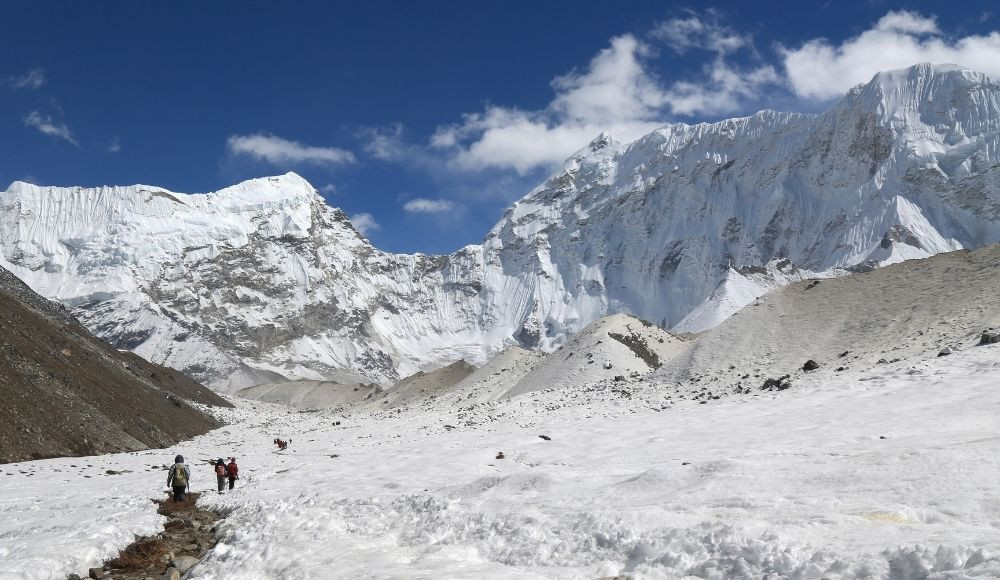
Another stop of the trek is Lobuche. After staying a night in Lobuche, you will trek to Gorak Shep and Everest Base Camp. Exploring the base camp of the world’s prominent eight-thousander is an incredible part of the day. After visiting the base camp, you will get to Kala Patthar. From Kalapthhar, you can see the panoramic views of the mountains in Khumbu and is one of the most popular vantage points of the Everest region. Onwards, you will trek to Pheriche and Namche, reaching Lukla. A returning flight to Kathmandu concludes the Everest Base Camp trek.
|
Everest Base Camp Trek Outline Itinerary |
|
Day 01: Kathmandu Arrival |
|
Day 02: Kathmandu Sightseeing and Trek Preparation |
|
Day 03: Fly to Lukla, Trek to Phakding |
|
Day 04: Phakding to Namche Bazaar |
|
Day 05: Acclimatization in Namche Bazaar |
|
Day 06: Namche to Tengboche |
|
Day 07: Tengboche to Dingboche |
|
Day 08: Dingboche Acclimatization |
|
Day 09: Dingboche to Lobuche |
|
Day 10: Lobuche to Gorak Shep and Everest Base Camp |
|
Day 11: Hike to Kala Patthar, trek to Pheriche |
|
Day 12: Pheriche to Namche |
|
Day 13: Namche to Lukla |
|
Day 14: Flight to Kathmandu |
|
Day 15: Departure |
Everest Base Camp trek is a moderately difficult trek. Trekkers with previous trekking experience and good physical fitness can complete this trek easily. Getting to the base camp of Mount Everest is doable, however, acute mountain sickness and physical difficulty can make the trekking difficult. Some precautions and health measures during the trek can mitigate the risk of altitude sickness, and other difficulties.
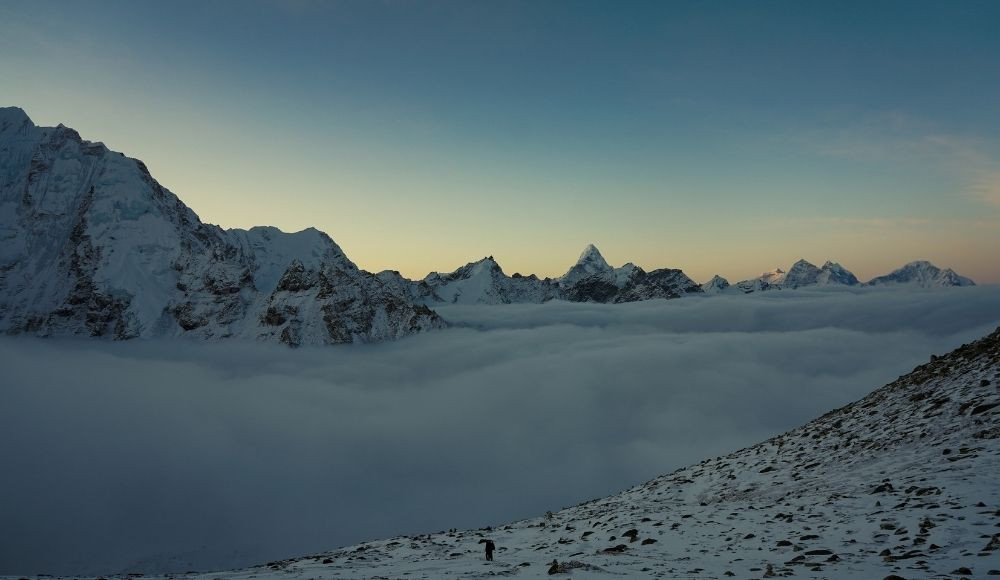
According to medicalnewstoday, High Altitude Sickness (HAS) is a common disorder that causes headaches, dizziness, nausea and vomiting. The prevalence of altitude sickness increases with higher altitudes, and the intensity of symptoms also increase with altitude. Altitude sickness begins to affect people who ascend rapidly to altitudes greater than 2500 meters (8200 feet).
Many people know that high altitude can cause you to be short of breath or have trouble breathing. This is just the beginning of what can happen to your body during a time at altitude (examples for altitude sickness are being dizzy, having headaches, and having shortness of breath). High altitude can also affect your blood pressure, which can cause problems with your heart. There are especially those who develop high altitude sickness (HAS) which is significant and sometimes even deadly at very high altitudes.
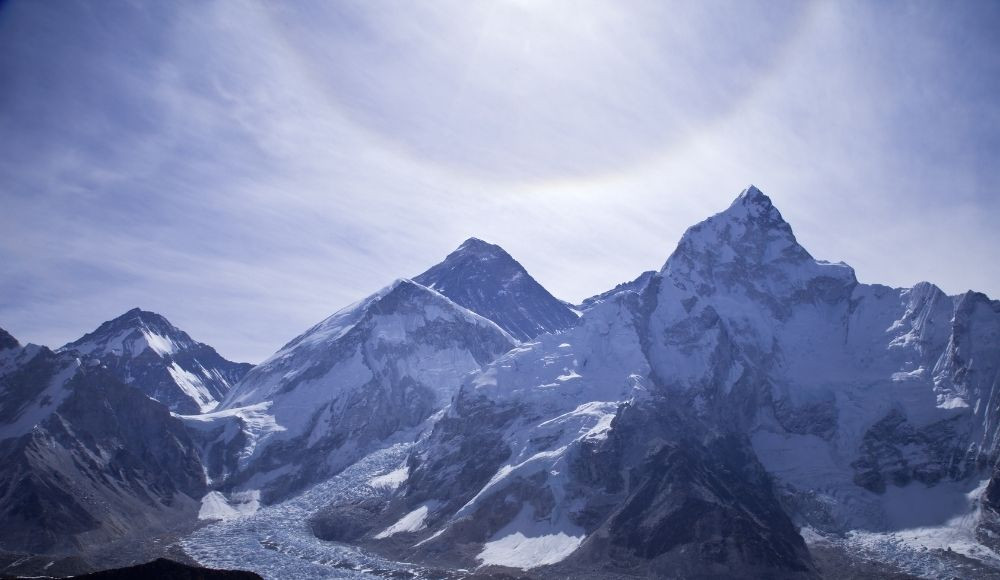
Aside from altitude sickness, there are also some other things that you can get when you are at very high altitudes. For example, you can get frostbite on your fingers, toes, and face (even if it is warm), dehydration, and high-altitude Pulmonary Edema. In the most severe cases of this condition, you can even die.
High altitude sickness occurs because the air pressure is low at elevation. As the pressure is low, the amount of oxygen that we take in is decreased. This can cause a person to feel weak and dizzy.
For your body to have good circulation, it needs to breathe efficiently. This is why a person who is at an altitude with low oxygen might feel dizzy or lightheaded.
Asthma may also occur with high altitude sickness because there are not enough of the body's normal chemicals available to help the lungs clear out secretions.
High Altitude Sickness can happen when the atmospheric pressure changes from sea level to high altitude.
Altitude sickness affects all people, regardless of age or fitness level and can cause mild symptoms at sea level to more severe illness with serious consequences in extreme altitudes. It is not unusual for a person who has never had altitude sickness before to experience some symptoms at elevations as low as 10,000 ft. Symptoms usually include headaches, nausea, dizziness and vomiting and often last one day but may last up to three weeks.
Mountain Sickness is a common problem in higher elevations. The rapidly changing weather and lower oxygen level in upper mountain areas cause breathing difficulty, dryness, soreness, headache and nausea. This condition of having physical difficulties due to lack of sufficient oxygen is altitude sickness.
Some of the problems that you might experience in higher elevations are:-
If headache and any of the other symptoms occurred after gaining elevation, it is most probably due to high altitude sickness. During this condition, letting go of the elevation by getting down to the lower areas or getting professional medical support is helpful. Severe symptoms of altitude sickness can be dangerous.
Some precautions to take to lower the risk of acute mountain sickness are:-
Khumbu cough is a common respiratory infection in the Khumbu region of Nepal, especially among hikers or trekkers. The name comes from the Khumbu Sherpa people who live in this region. (Parajuli, 2009)
Khumbu cough is a dry, non-productive, hacking type of cough that can get severe and last for up to four weeks. Coughing often brings about a feeling of choking or even gagging, which produces no phlegm or mucus. In some cases, a sneeze may also be produced.
There are a few different causes of Khumbu cough. The most common cause of the condition is the "coughing tick", which is the larva of a midge fly that feeds on human and animal respiratory secretions, causing irritation and infection. Other, less common causes include viral infections such as influenza and bacterial infections including group A Streptococcal bacterium and certain other strep strains (Streptococcus pneumonia).
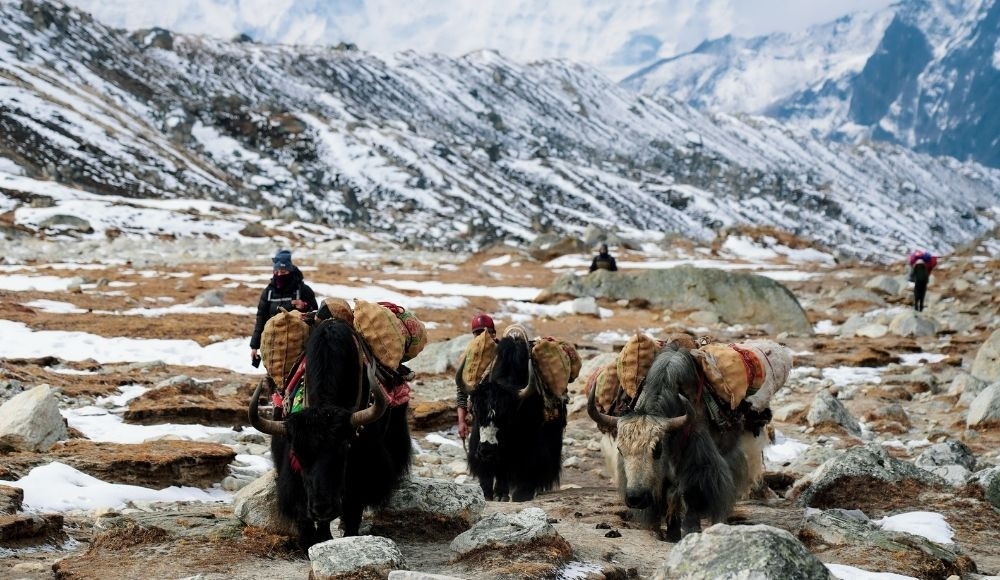
There is no specific treatment for Khumbu cough, except for supportive care. Resting and drinking plenty of fluids is important. Pain relievers can also help, such as ibuprofen or paracetamol (acetaminophen). Cough suppressants are not recommended since they can reduce the cough reflex, causing damage to the airway. Antibiotics do not work in this condition and they may cause bacterial resistance.
In a few cases, coughs have been linked to altitude sickness, particularly if the illness was accompanied by some other symptoms. Symptoms include nausea and vomiting, as well as a general lack of energy and inability to focus. In extreme cases, victims may also experience breathing difficulties and shortness of breath, especially at altitudes above 5000 m.
Level 4 trekking is an adventure scale where you and a group of friends or family embark on a backcountry hike of 10, 21, 37 or even 77 miles. You'll put in at the starting point and head to your goal either by hiking back to the point where you started or by contouring around the base of a mountain. It's about conquering fears, discovering new beauty and finding strength for life.
Through all four levels of trekking, Nepal uses its exceptional trail preparedness to maintain a personal relationship with each trekker. From arranging a pick up at the airport to providing you with a local guide and porters who will carry your equipment, all of your needs are taken care of without fail. We take care of all the details so each trekker can concentrate on the fun and adventure that nature provides. Each trek is personally developed by us because we believe in preserving the integrity of the area while catering to each trekker's demands.
According to the National Center for Atmospheric Research, humans have been living in an area of the world with an average elevation of 7830 feet. This has brought with it several known hazards such as higher pressure and lower oxygen levels. Everest base camp trek lies at an elevation above 5000 m. in extreme mountainous terrains. And mountains are the most unpredictable geography. It is common to find difficulty in the mountains due to the nature of geography. The following are some common difficulties associated with terrestrial life in these conditions that you may encounter.
Hypoxia: A condition where one becomes too short of breath to exercise or function properly if they are active too long at altitude. It is preventable with medical facilities on site.
Dizziness: In the common explanation, one may feel like they are spinning around or that the ground is moving in front of them if they go from a sitting to a standing position too quickly. This can also be caused by shortness of breath.
Malfunctioning: A common problem where an electronic device is not functioning as it should at altitude. If a laptop has a malfunctioning power cord, it will not be able to charge normally so it can't function properly.
General Lack of Energy: As altitude increases, the amount of oxygen in the air decreases. Your body may start to feel like it has no energy to do anything.
Fatigue: There is less oxygen in the air, so you will tire more easily. This will cause you to rest and sleep more often than you are used to.
Dizziness/Nausea: You may feel dizzy or nauseous if you are not using your muscles properly at a high elevation. For example, if you are sitting in a chair at home and then suddenly stand up, it can cause dizziness because your muscles are not used to functioning like they were in that position.
Mild altitude sickness (M.A.S.): This is a short form of M.E., which is also caused by low oxygen levels and causes symptoms such as nausea, headaches, drowsiness, lightheadedness and dizziness. If these symptoms occur while travelling at high elevation they should be treated thoroughly with the help of a medical professional.
Inclement weather during trekking can be a hindrance and throw off the perfect trekking plans. It can also potentially prove dangerous to anyone travelling. Everest base camp trek should be planned during the right season, looking after the forecasts and season favorability.
The main problems you will face due to inclement weather while trekking is:
However, there are some ways to cope with bad weather and these are discussed below.
Avoid going out in a storm: If you are caught in a storm on the trail, try to find a safe place for your tent as soon as possible. Setting up camp may take extra time due to less visibility.
Avoid camping on ridges: This is where the wind will be strongest, which can cause sudden gusts and also cause snowdrifts around your tent when it rains.
Take your time: If you are caught in a storm, consider staying put for a while. The weather will likely get better, and rushing to finish the trail can be dangerously exhausting. Also, the urge to "get out of the bad weather" can lead you to make mistakes such as taking shortcuts or not following a map correctly.
Dress appropriately: When hiking in inclement weather, it is important to keep yourself warm but not overheat. A good general rule is to dress in layers; this makes it easier to take off or add clothing to stay comfortable.
Pack extra food: When the weather is bad, you need more calories than usual. Carrying extra food will keep you from getting hungry and losing energy.
Bring an emergency blanket: You can use this blanket (if it is still dry) to keep warm when building a campfire, or if the temperature drops at night.
Adverse trail conditions while trekking is a common problem with many causes. These causes range from natural hazards such as avalanches and rockfall to extreme weather events such as rain or snow.
Several factors are extremely important in order to maintain trail conditions during treks. The first is navigation and planning. A high level of navigation skills during treks is vital and can save individuals from deadly situations. Having knowledge about terrain features and weather conditions can help people make decisions that will reduce the risk associated with trail conditions.
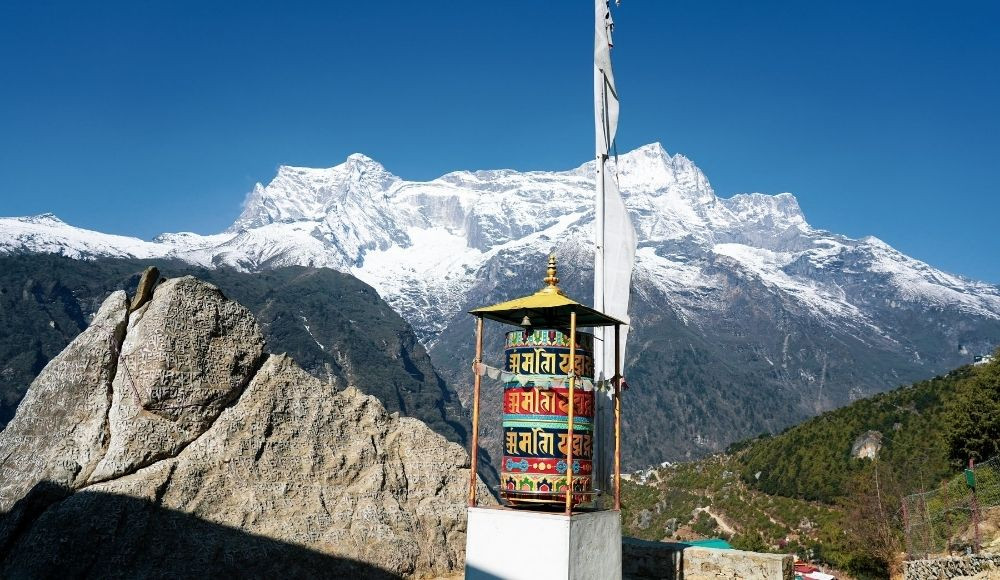
The second important factor is a well-planned trip that includes research of the trail and understanding the weather and other conditions. The third factor is basic first aid training, which can help individuals identify injuries and know how to handle them. The fourth factor is an awareness of the environment and the conditions in it, particularly weather hazards such as avalanches or rockfall, which are two of the most common causes of trail conditions while trekking.
Navigation and terrain features are not so difficult in the Everest base camp trek. Since the trail is widely used and there are shops and teahouses throughout the trek, you don’t have to hesitate about finding a cosy space for your night stay and eateries.
Despite the difficulties, many trekkers are willing to trek in the Khumbu region. Altitude Sickness is the main problem throughout the trek and can be maintained by physical training before the trek. Extending the acclimatization day is also a way to lower the risk of altitude sickness. There are many medical teams on stand by to rescue you through a helicopter in time of emergency but having a good insurance policy is helpful. Similarly, a proper diet is needed throughout the trek so that you can walk better.
The best time to visit Everest base camp is in the months of Autumn and Spring. The months of March, April, May and September, October, November are the best time to visit Everest Base Camp.
Insurance is considered beneficial for any person who plans to go on a trek that is longer than five days or is in a remote area. Typical insurance coverage for the Everest Base Camp trek would be medical expenses, evacuation, and repatriation. Insurance usually covers things like helicopter evacuations, which can be expensive if you need to fly out of the area and get medical treatment back home.
It is also a good idea to get insurance for the Everest Base Camp trek in case of injuries that happen on the trek or if you need medical attention. You do not want to be stranded somewhere after a leg injury or other emergency and be unable to get home.
Everest base camp trek is one of the long and difficult treks in Nepal. It takes about 15-18 days to complete and is considered a demanding trek due to its high elevation attributes. You may have to carry your backpack up to the hillside without help from porters, so you'll need things that are not just light but also durable and easy to maneuver. There's a lot of information out there about what you should pack for a trek like this, but we've compiled some essentials that will help you have a more enjoyable trip with less hassle. To access the information on trek backpack essentials, visit Nepal Trekking Gear Checklist.
It's a question many novice hikers ask. But the answer depends on what you mean by ‘beginner’. If you are venturing to base camp for your first time, then yes, it is achievable with the right preparation and equipment. However, having good physical training before venturing on the trip can help gain the stamina that you might need to trudge the steep mountains.
Everest base camp takes 14-18 days to complete depending on the itinerary, walking speed and weather condition. This trek is ideal for all people with moderate physical fitness and is achievable with a good walking pace.